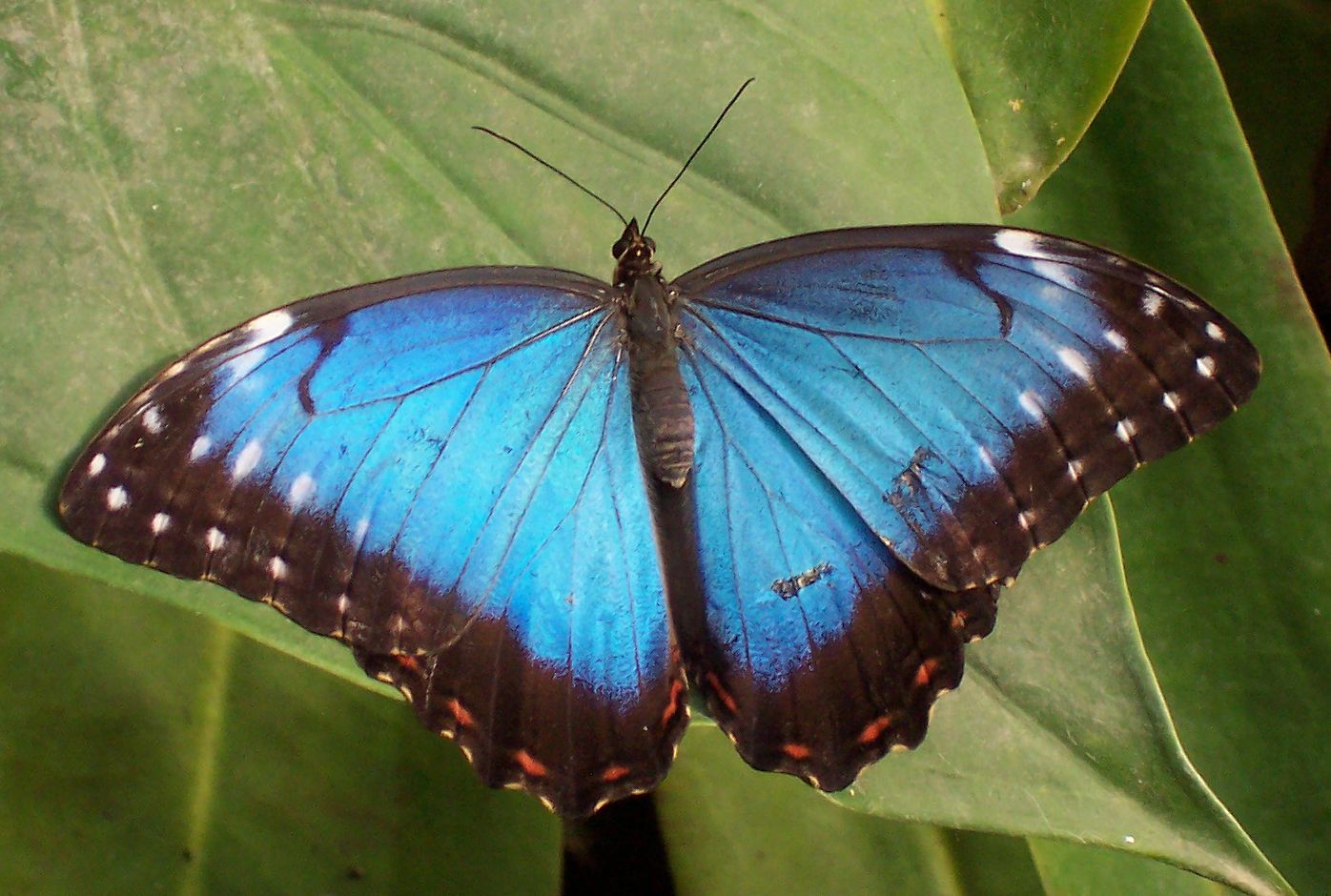
Morpho peleides (Morpho peleides)
Phylum — arthropoda
Class — insecta
Order — lepidoptera
Family — nymphalidae
Genus – morpho
Appearance
The larval stage of Morpho peleides has five instars or molts. In the early instars, the body is bright green-yellow with maroon patches, and pairs of red and white hair tufts. By the fifth instar, the body is the same width as the head, and the head and body both change to a brownish color. Immediately before pupation the caterpillar enters a prepupal stage and the entire body color changes to light green, with only the tufts of hair on the dorsal side of the larvae remaining white and maroon.
Morpho peleides is recognized by the iridescent blue coloration on the dorsal (top) side of the wings. Conversely, the undersides of the wings are brown and have a cryptic coloration and pattern. Large eyespots are present on the ventral (bottom) side of the forewings and hindwings. The number of forewing eyespots on each individual may vary. This coloration serves as protection from predators by making the butterfly somewhat camouflaged in the forest, and the eyespots can startle or intimidate potential predators. They are large butterflies, with adult wingspan measuring 5-8 inches (127-203 mm).
Habitat
Morpho peleides is one of the most widespread and abundant Morpho species, occurring from Mexico through Central America, and in South America down to Paraguay.
Behavior
Males are most active in the morning, females – at noon. The flight is slow.
The larvae of Morpho peleides butterflies are occasional cannibals. The caterpillars have glands in the thorax that emit a strong odor protecting them from predators. All stages of larvae are known to feed at dawn and dusk. When they are not feeding, the larvae remain motionless.
Diet
Known larval food plants are Leguminosae (Arachis hypogaea, Dioclea wilsonii, Inga species, Lonchocarpus, Machaerium cobanense, Machaerium salvadorense, Machaerium seemannii, Medicago sativa, Mucuna mutisiana, Pithecellobium, Pterocarpus rohrii, Mucuna urens) and Bignoniaceae (Paragonia pyramidata).
Adult Morpho peleides butterflies are frugivorous, or fruit feeders, and often feed on decaying fruits. Unlike most butterflies, they do not visit flowers for nectar. The adults typically feed on tree sap when decaying fruit is unavailable. Often butterflies can be seen on drying puddles, where they absorb water with minerals.
Reproduction
For their reproduction you need an aviary with a size of 200 x 200 x 200 cm. The eggs of Morpho peleides are small (approximately 1-2 mm in diameter), smooth, hemispherical, and laid on the upper surface of leaves. They are light green in color and have a circular band of small brown spots near the top. The incubation period is 8-10 days. It is better to keep the caterpillars in terrariums with good ventilation for 6-8 insects. In the terrarium, you need to place a branch of a forage plant. Forage plants should be replaced every 3-4 days. Daily cleaning of the terrarium is required. The temperature is 24-26 oC and humidity 75-80%. The caterpillars develop for one and a half to two months. The pupae are pale green. The pupa stage lasts for about 2 weeks. The development cycle takes 115-120 days. The butterfly lives up to 4 weeks.
In captivity
The mesh terrarium with a size of 50 × 50 × 70 mm is suitable for keeping butterflies. Room temperature is necessary. Daylight time is 12 hours.
You can feed the butterflies with an overripe banana, slices of orange and pear, and a syrup of honey diluted with boiled water in a ratio of 1: 10.
 Russian
Russian
 English
English























